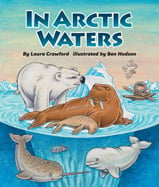Alignment to Standards for NJ

| Grade | Number | Standard |
|---|---|---|
| 2 | 5.3.2.B.2 | Compare how different animals obtain food and water. |
| 2 | 5.3.2.C.1 | Describe the ways in which organisms interact with each other and their habitats in order to meet basic needs. |
| 2 | 5.3.2.C.2 | Identify the characteristics of a habitat that enable the habitat to support the growth of many different plants and animals. |
| 2 | 5.3.2.C.3 | Communicate ways that humans protect habitats and/or improve conditions for the growth of the plants and animals that live there, or ways that humans might harm habitats. |
| 2 | 5.3.2.D.1 | Record the observable characteristics of plants and animals to determine the similarities and differences between parents and their offspring. |
| 2 | 5.3.2.E.2 | Describe how similar structures found in different organisms (e.g., eyes, ears, mouths) have similar functions and enable those organisms to survive in different environments. |
| 2 | 5.4.2.G.3 | Identify and categorize the basic needs of living organisms as they relate to the environment. |
| 2 | 5.4.2.G.4 | Identify the natural resources used in the process of making various manufactured products. |
| 4 | 5.3.4.A.2 | structures that have similar functions in various organisms, and explain how those functions may be carried out by structures that have different physical appearances. |
| 4 | 5.3.4.B.1 | Identify sources of energy (food) in a variety of settings (farm, zoo, ocean, forest). |
| 4 | 5.3.4.D.1 | Compare the physical characteristics of the different stages of the life cycle of an individual organism, and compare the characteristics of life stages among species. |
| 4 | 5.3.4.E.2 | Evaluate similar populations in an ecosystem with regard to their ability to thrive and grow. |
| P | 5.3.P.A.1 | compare the basic physical characteristics of plants, humans, and other animals. |
| P | 5.3.P.B.1 | describe how plants and animals obtain food from their environment, |
| P | 5.3.P.C.1 | natural habitats provide for the basic needs of plants and animals with respect to shelter, food, water, air, and light (e.g., dig outside in the soil to investigate the kinds of animal life that live in and around the ground). |